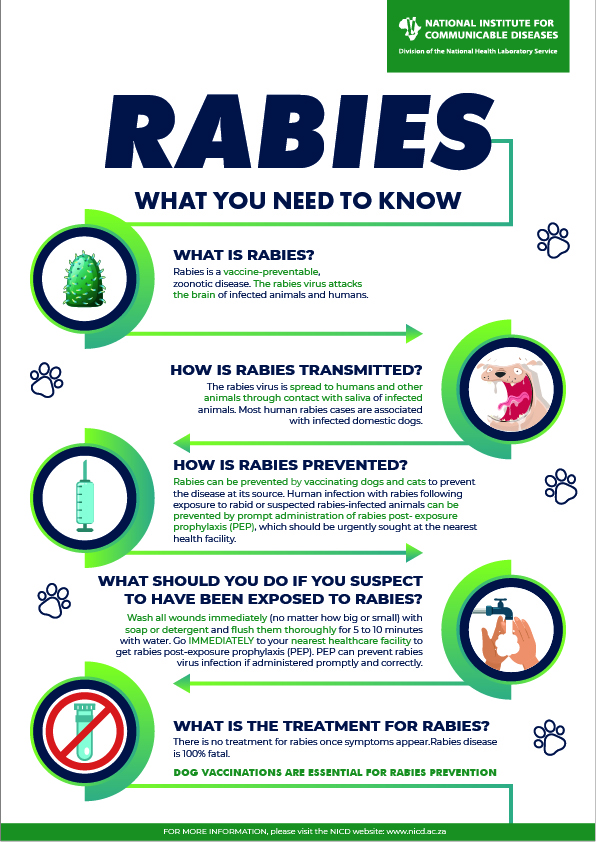What is Rabies?
Rabies is a viral infection of the nervous system. The disease is reported in different wild and domestic animal species, but most cases of rabies in South Africa involve domestic dogs. Human rabies cases are rare in South Africa but cases are still confirmed annually. Humans are exposed to rabies through bites (and other wounds) inflicted by rabid animals. The virus is contained in the saliva of a rabid animal. Most human rabies cases in South Africa are associated with domestic dog exposures. Although a fatal infection, rabies can be controlled through vaccination of domestic dogs (and cats) and the use of rabies post-exposure prophylaxis in exposed human cases.
Forms For Notification
When notifying Rabies, please also complete and submit the NMC case investigation form to NMCsurveillancereport@nicd.ac.za


